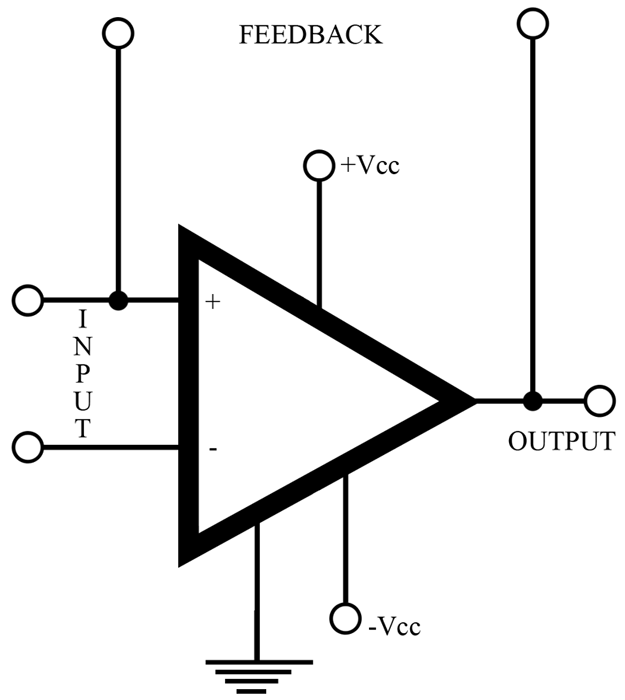In this article we will discuss about operational amplifier and key parameters of operational amplifier. So lets start with description.
Description of operational amplifier:
The basic op-amp is a DC coupled, high-gain, differential amplifier with external negative feedback. It is characterized by almost infinity open-loop gain, almost infinity input impedance, and almost zero output impedance. Invariably used with an external negative feedback element, the op amp provides a fixed gain, determined entirely by the ratio of the input resistance and the feedback resistance. As the feedback resistance increases, the gain increases as well. When the feedback resistance is zero, the op amp provides unity gain.
Op amps can be used as electronic integrators or differentiators, depending on the R-C network in the input and feedback circuit. Op amps generally have a large bandwidth and low noise, and the key parameters are relatively stable with respect to temperature and time.

A large variety of op amps are available as ICs ranging from the general-purpose op amp to a number of highly specialized types. The basic operation of all types of op amps is the same, and specialized types are distinguished by the emphasis on some key parameters. The major types of op amps are described in the following pages.
Key Parameters of Operational Amplifier
- Open-loop gain: Usually specified at DC, but a plot of open loop gain versus frequency is important in may applications. The open-loop gain is an indication of the degree of stability that can be obtained with negative feedback.
- Input Impedance: Represented accurately by a parallel R-C circuit across the input terminals, it is most frequently stated as input resistance only.
- Input offset voltage: Measured by using feedback resistor to set a large fixed gain. The value of the error at the output is then divided by the gain. In most circuits, the input offset voltage can be adjusted to zero by a potentiometer.
- Input noise: Frequently given as signal-to-noise ratio, noise figure or input noise current, low-frequency noise, and wide band noise are specified separately. Spot noise occurs at certain frequencies and is indicated in detailed manufacturers’ specifications.
- Common mode rejection ratio (CMRR): The definition is the same as that given in differential amplifier because the input portion of the op amp consists of a differential amplifier.
- Maximum common mode voltage: Same as CMRR
- Drift versus temperature: Temperature change of offset voltage, bias current, difference current, and other parameters is specified as the temperature coefficient for each parameter, or else is listed in a detailed table or in graph form.
- Bias current: The current from an infinity source impedance applied to either input that will drive the output to zero.
- Difference current: The difference between the bias currents at the two input terminals.
- Bandwidth: The frequency range over which some of the specifications apply.
- Full power response: The sine wave output at the maximum frequency with unity, close-loop, gain, for a specified distortion input the rated output load.
- Rated output voltage: The minimum peak output voltage at rated current without any nonlinearity.
- Rated output current: The minimum output current at the rated output voltage.
- Overload recovery: The time required for the output voltage to return to the rated value after a 50% overdrive saturation.
- Settling time: The period from the input of a step voltage to the time the output value reaches the specified error range of its final value. This is usually measured at unity gain, without capacitive loading.
- Slew rate: Usually given in volts per microseconds (V/us), this indicates the maximum rate of change of the output voltage for an input step-voltage change.
Applications of op-amp
Op amps are used so widely that a list of applications would exceed the space allotted here.
- Linear Follower (current) operational amplifier
- Programmable operational amplifier
- Isolation amplifier
Comments:
Op amps were originally developed for use in analog computers but are now in digital applications as well. While most op amps require a positive as well as a negative power supply source, a whole line of op amps is now available for use with a single power supply source, frequently the same voltage as that used in digital logic ICs. Most DIP IC packages contain several op amps in the same chip. The characteristics of each op amp on a chip are generally identical.